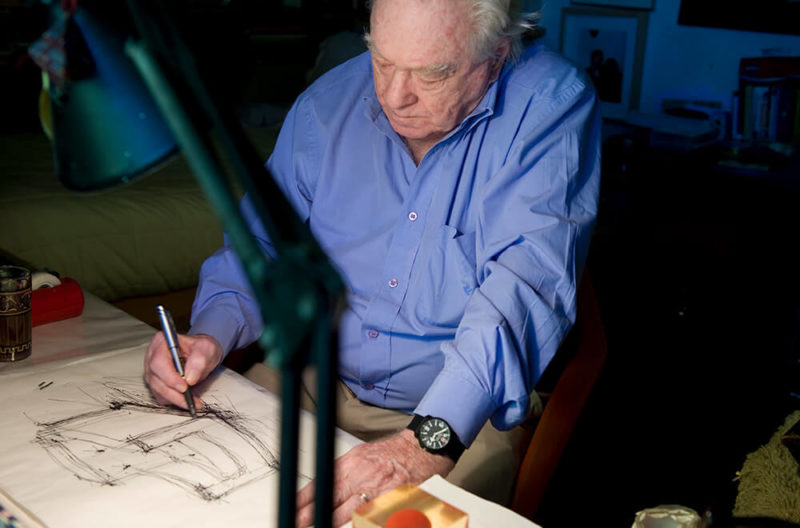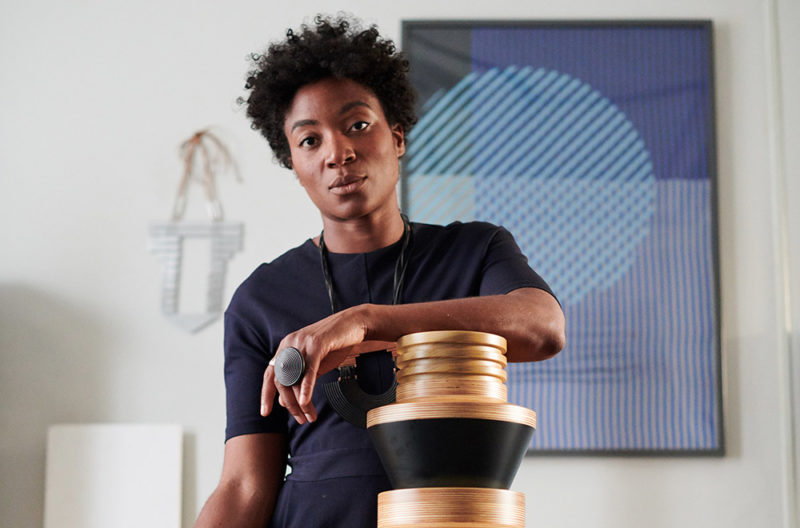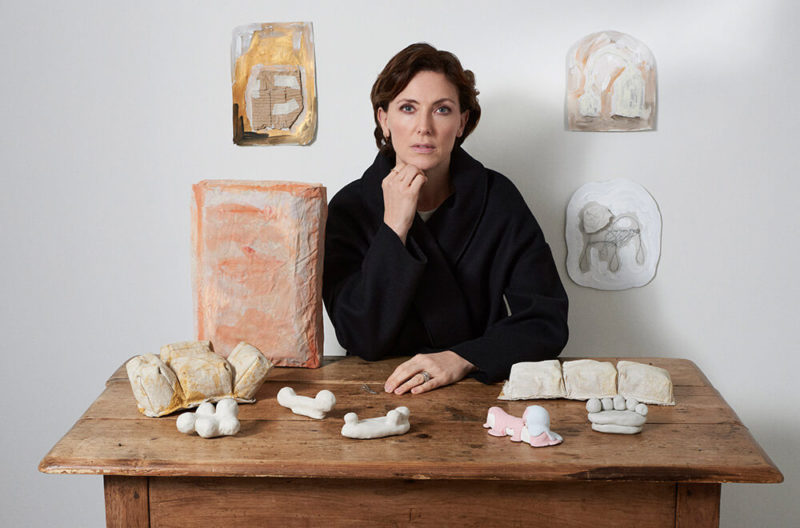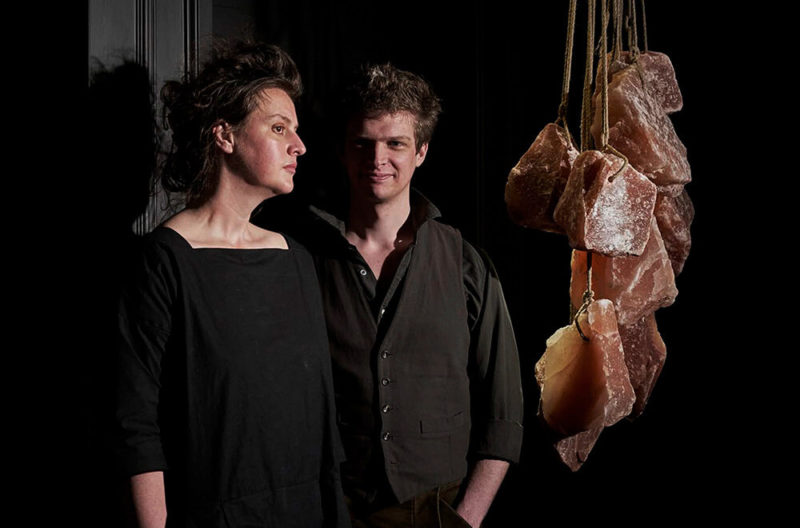LDF / Paul Cocksedge: Slump
Find out what happens when Cocksedge applies his curiosity, audacity and determination to industrial glass.
10th September – 18th December 2020
Carpenters Workshop Gallery, London

Paul Cocksedge, ‘Slump Rock Coffee Table’, 2019
COURTESY: Carpenters Workshop Gallery
PAUL COCKSEDGE REVELS in the challenge of distorting and transforming materials into hitherto unimaginable states. This alchemistic exploration is dramatically displayed in the British designer’s first exhibition, Slump, at Carpenters Workshop Gallery in London. It features eight limited-edition and unique tables made using industrial glass in an interplay with other materials. The transparent sheets of glass have been treated in a completely novel way: they have been reheated, stretched and ‘slumped’ over their bases and legs. In ‘Slump Bubble Table’, for instance, moulded glass undulates over steel tubes, like bubbling water. In ‘Slump Rock Coffee Table’ the glass sheet gently rises over a boulder, and in ‘Slump Dining Table’ it glides over steel tube legs.
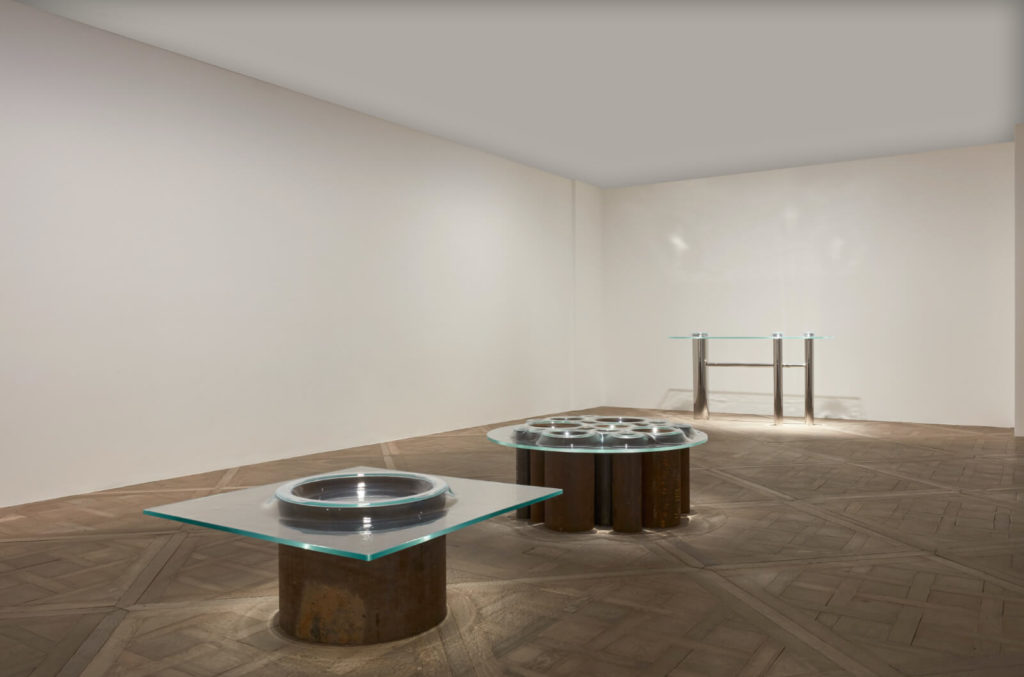
Installation view ‘Paul Cocksedge: Slump’
COURTESY: Carpenters Workshop Gallery
These graceful pieces reflect Cocksedge’s success in imposing his will on industrial glass to make it react differently and adopt another persona. The last piece was completed in March, at the beginning of lockdown. For over ten years, I’ve been in hundreds of factories, usually surrounded by flat sheets of industrialised materials like metal, marble or glass, Cocksedge says. They’re practical to work with but there’s always something uptight, rigid and intense about them. I felt they needed to relax a bit. But realising that simple idea of allowing the material to breathe demanded so much technical complexity, precision and obsession that at some point I almost wanted to run away because it seemed so hard to achieve. Those two opposites “ simplicity and complexity “ is what drives our studio. We want to go into territory that hasn’t been explored before.
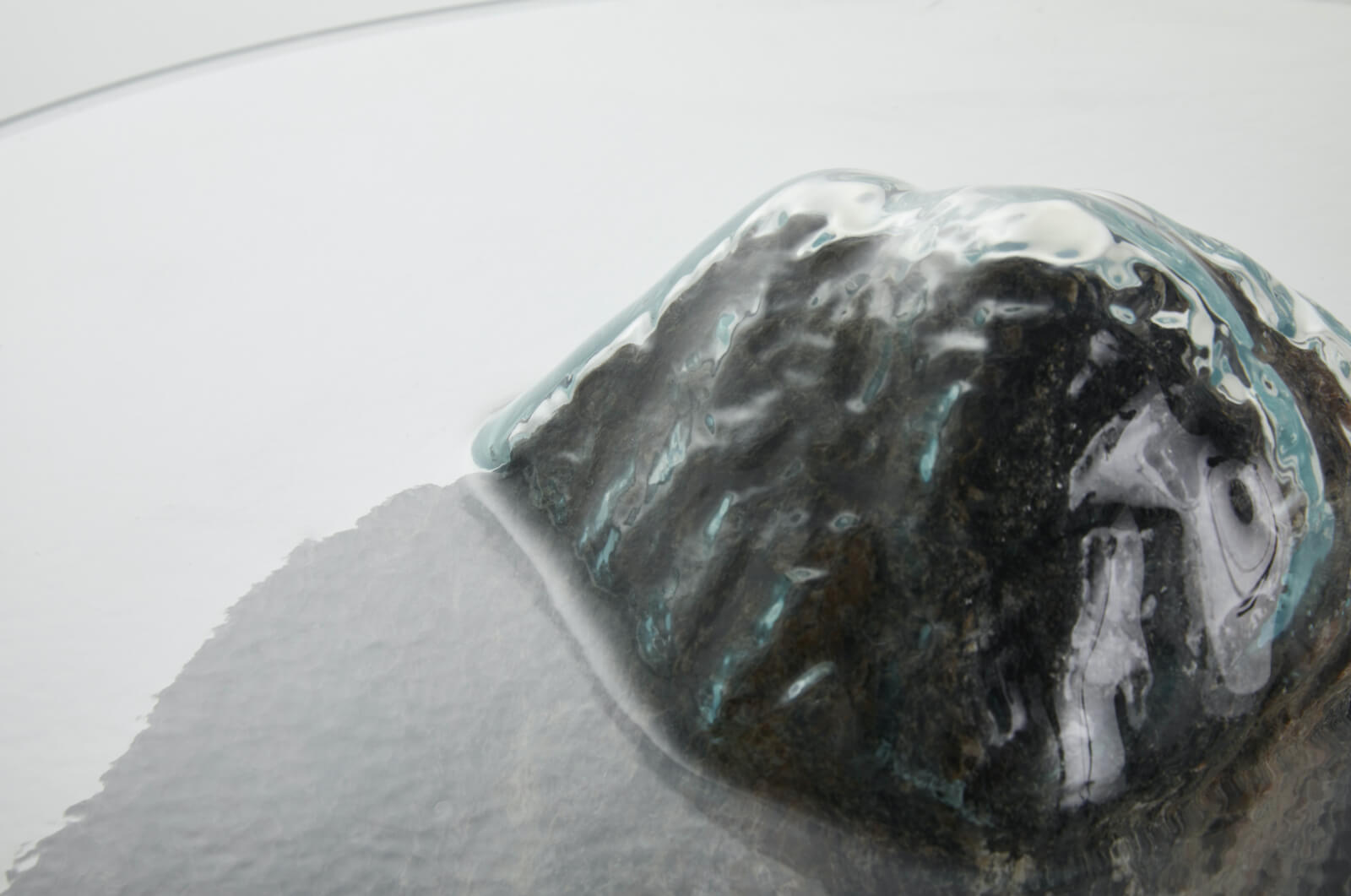
Paul Cocksedge, ‘Slump Rock Coffee Table’, 2019 (detail)
COURTESY: Carpenters Workshop Gallery
Indeed, Slump involved Cocksedge and his team zigzagging around a cocktail of companies in Brighton, Cambridge, Manchester and in Germany. Each factory specialised in a different process, from reheating to toughening, shaping or polishing the material “ and transporting the heavy pieces was logistically arduous. Each piece had its own set of requirements. For ‘Slump Rock Coffee Table’, Cocksedge visited a quarry to find rocks of a certain height. Other people were looking at pieces of rock for their gardens and weren’t worried about the height, he recalls. But we were being obsessive. That’s the designer in me and the team: selecting nature to allow us to place the glass at the right height to make a practical object. These are pieces for the home and we want people to enjoy them and rest objects on them.
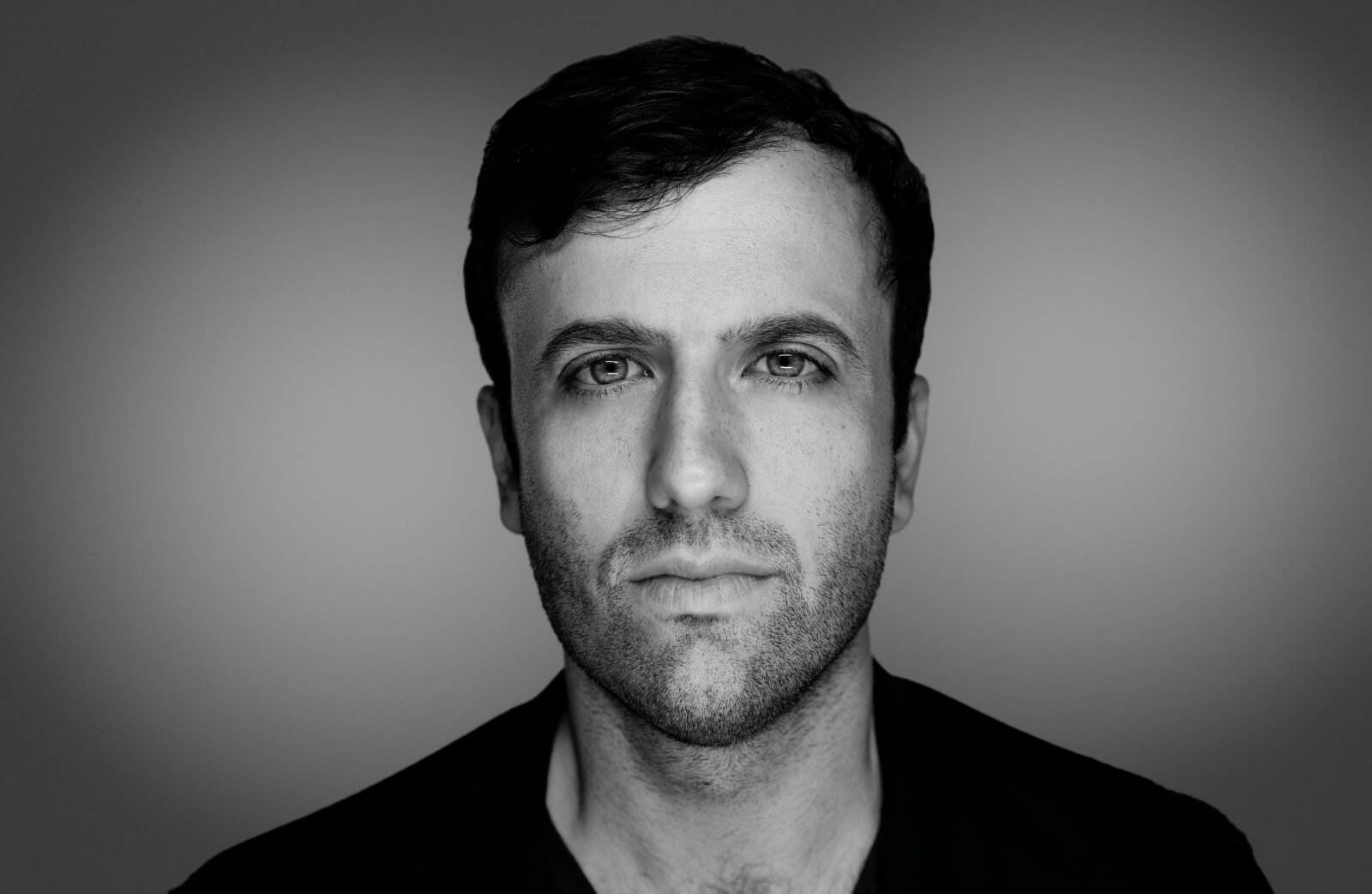
Paul Cocksedge
PHOTOGRAPH: Mark Cocksedge
BORN IN LONDON in 1978, Cocksedge is a stalwart of London’s design scene and a regular exhibitor during the London Design Festival. He studied industrial design at Sheffield Hallam University before attaining an MA in Product Design from the Royal College of Art. His graduate project, ‘Styrene’ (2002-2003), a chandelier made from heated polystyrene cups, revealed his fascination with pushing the boundaries of a material and working with light. This was seen, too, in the winner of the Bombay Sapphire Prize, ‘NeON’ (2003) “ glass vessels filled with natural gas that appear translucent in daylight, yet take on vivid colours in the darkness.
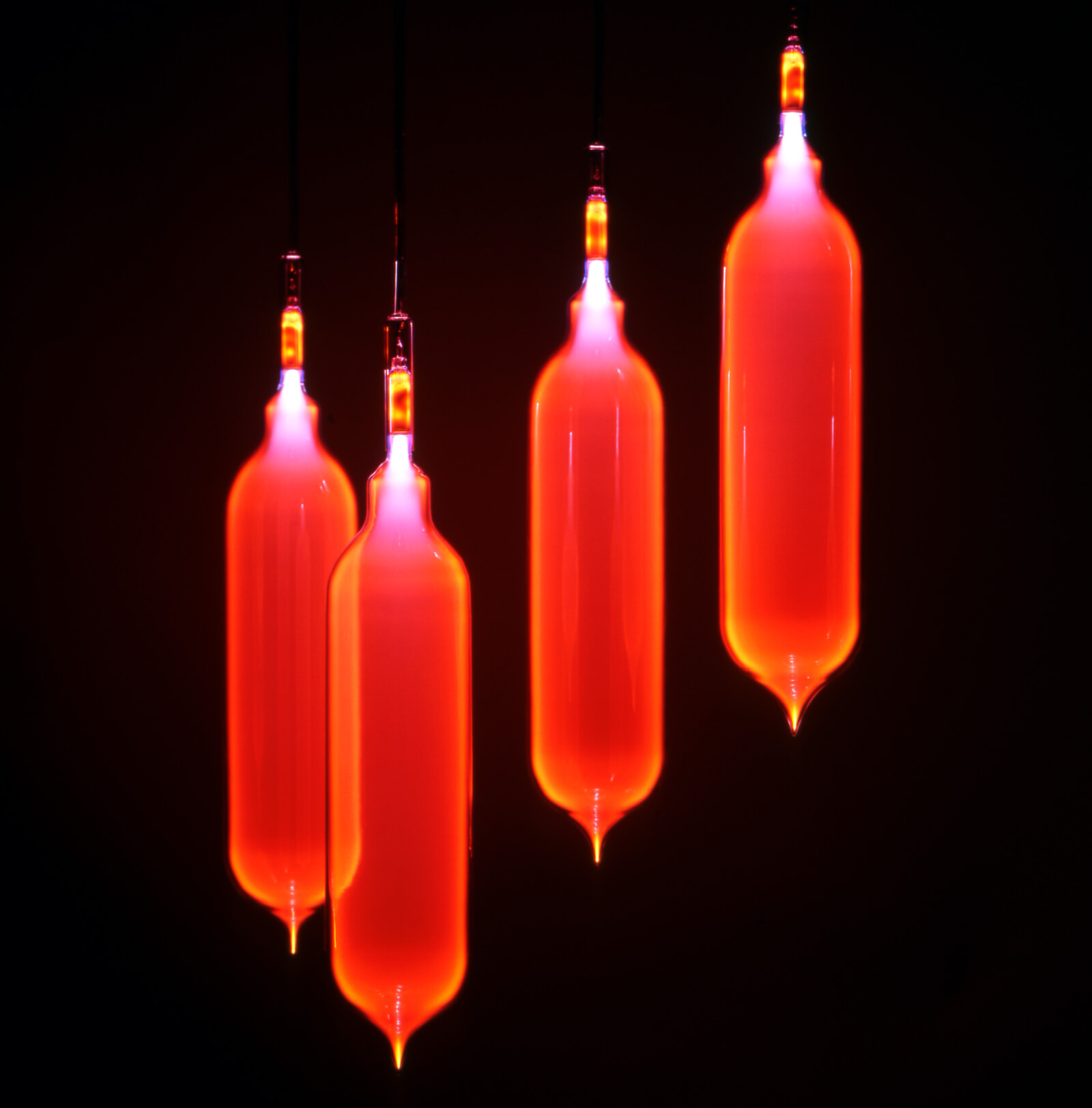
Paul Cocksedge, ‘NeON’, 2003
COURTESY: © Paul Cocksedge Studio / PHOTOGRAPH: Mark Cocksedge
The acclaimed designer Ron Arad, who taught Cocksedge at the RCA, remembers: Paul was extraordinary from the minute I met him, from the way he handled his interview and his curiosity always leading him forward to lots of things that he tried, Arad says. Curiosity for me is creativity. If I have to think of someone that practices curiosity-to-creativity-to-making-things, that’s Paul. When he applied to the RCA, his application was full of fake £10 notes “ it was a nice, humorous thing to do and I think some people have still kept some of them”.
In 2004, Cocksedge “ together with his business partner Joana Pinho “ opened his eponymous studio in Hackney. It has since become a laboratory for experimentation into materials, lighting and shapes. Since its inception, Cocksedge has balanced industrial product design (including lighting for the Italian brand Flos and furniture for the Dutch brand Moooi), with collectible design collections, ephemeral and permanent installations, charity projects and self-initiated products sold on his website. This ability to be versatile, whilst exploring the whole spectrum of design, is what sustains his passion.
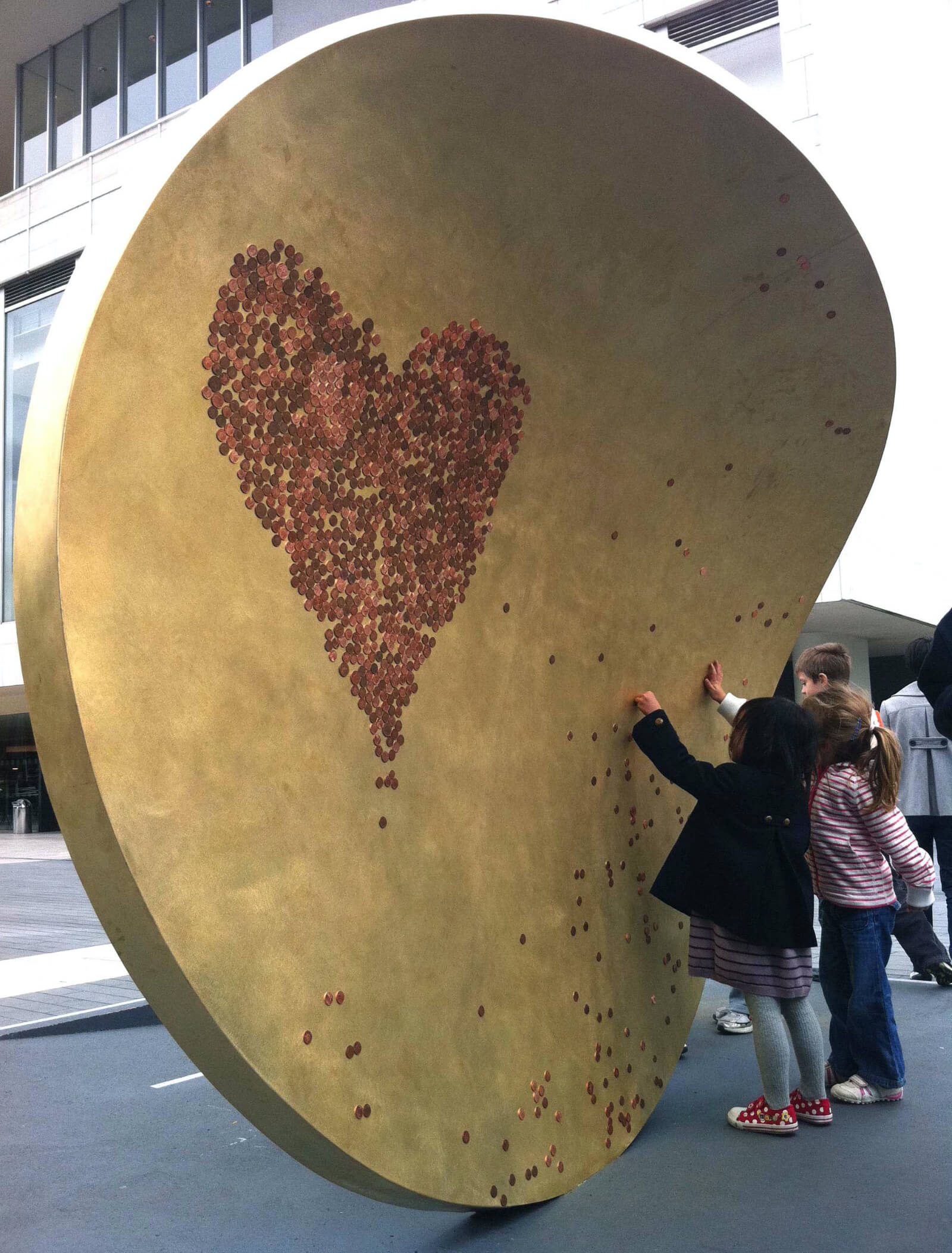
Paul Cocksedge, ‘Drop’, 2010
COURTESY: © Paul Cocksedge Studio / PHOTOGRAPH: Mark Cocksedge
Imbued in many of Cocksedge’s projects are elements of magic, movement and drama, revealing the power of design to provoke emotions like wonder or delight. For ‘KISS’ (2009), Cocksedge created a LED canopy in a shopping plaza in Milan that lit up when couples kissed under the mistletoe, with an Italian bank donating one Euro each time towards alleviating hunger in Uganda. The next year, he made ‘Drop’ (2010), a gigantic, tilting brass coin onto which passers-by affixed pennies, which was presented during the London Design Festival.
The studio is engaged with a longstanding investigation into making materials represent curved sheets of paper. One example is ‘Manuscript’ (2011) in Beijing, a sculptural installation inviting visitors to sit on red curly sheets of steel rising and extending across an avenue. More recently, Cocksedge made ‘Unbound’ (2019), a towering, permanent sculpture of aluminium pages soaring into the sky outside a library in Oklahoma, and ‘Bureau’ (2020), a lighting installation of stainless steel pages fluttering beside the wall of an office and retail space in London.
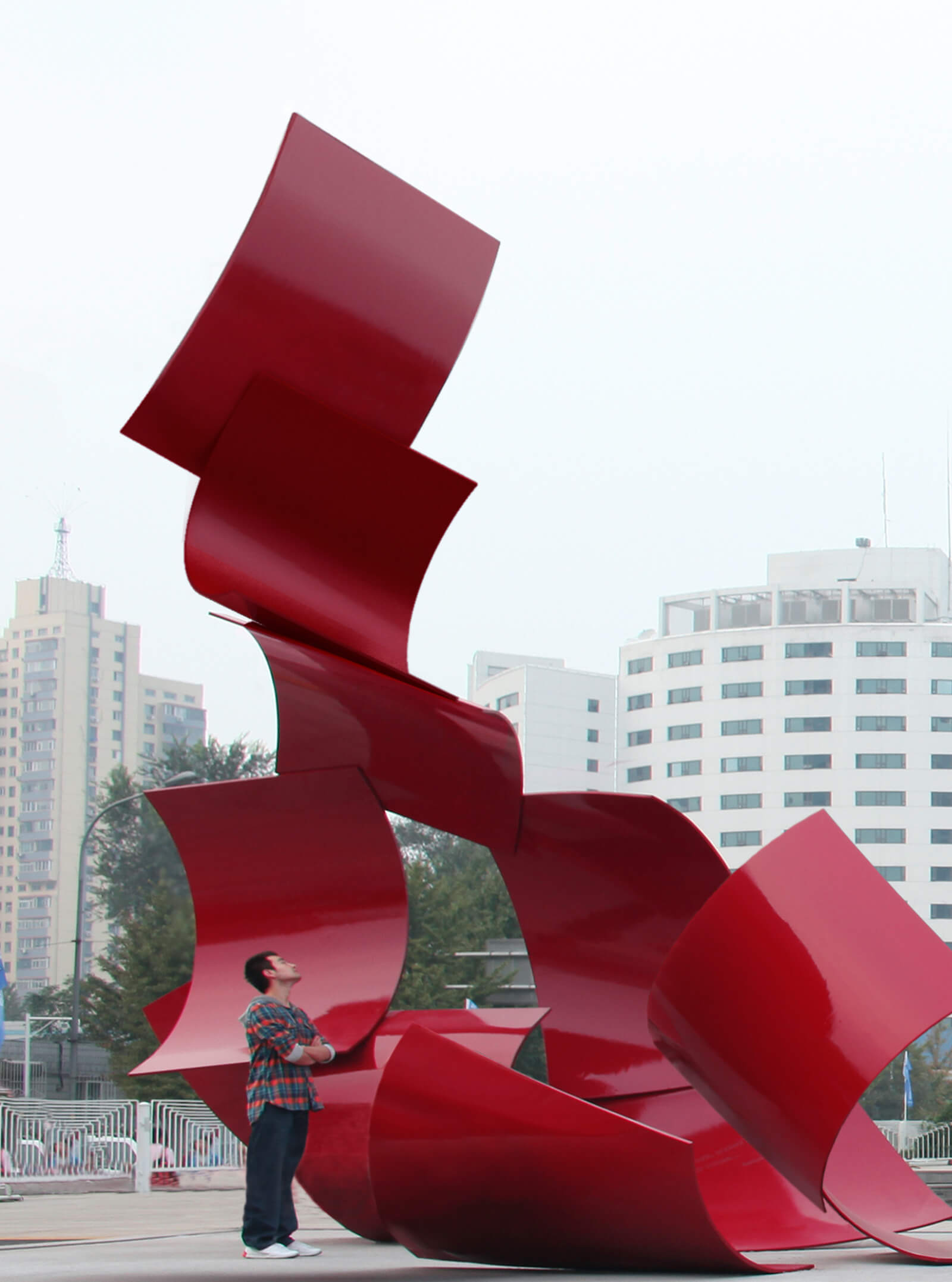
Paul Cocksedge, ‘Manuscript’, 2011
COURTESY: © Paul Cocksedge Studio / PHOTOGRAPH: Mark Cocksedge
“Paul has this incredible ability to give otherwise brute materials and extreme fabrication processes a wondrous sense of poetry and lightness …”
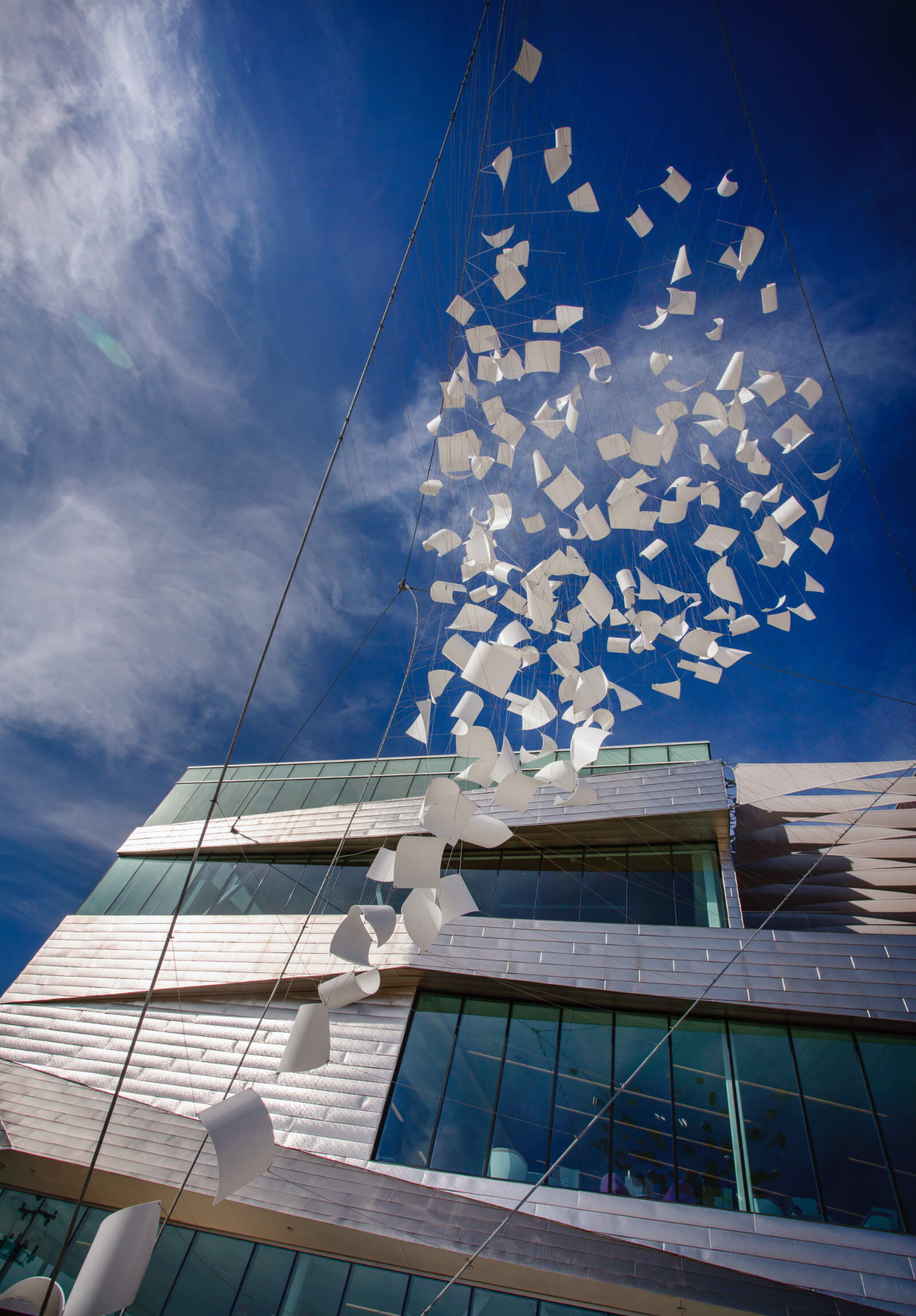
Paul Cocksedge, ‘Unbound’, 2019
COURTESY: © Paul Cocksedge Studio / PHOTOGRAPH: Norman Arts Council
“… He dives deep into how things are made and then makes them do what they’re not supposed to do”
RISK-TAKING, AUDACITY and determination characterise Cocksedge’s practice. Nearly threatened with eviction from his studio when his landlord proposed selling the building to a luxury property developer, Cocksedge reacted by drilling into the ground floor and using the cylinders of excavated material to make a series of furniture. Titled ‘Excavation’ (2017), it pithily communicates the precariousness facing many creative studios as a consequence of the gentrification of London’s East End.
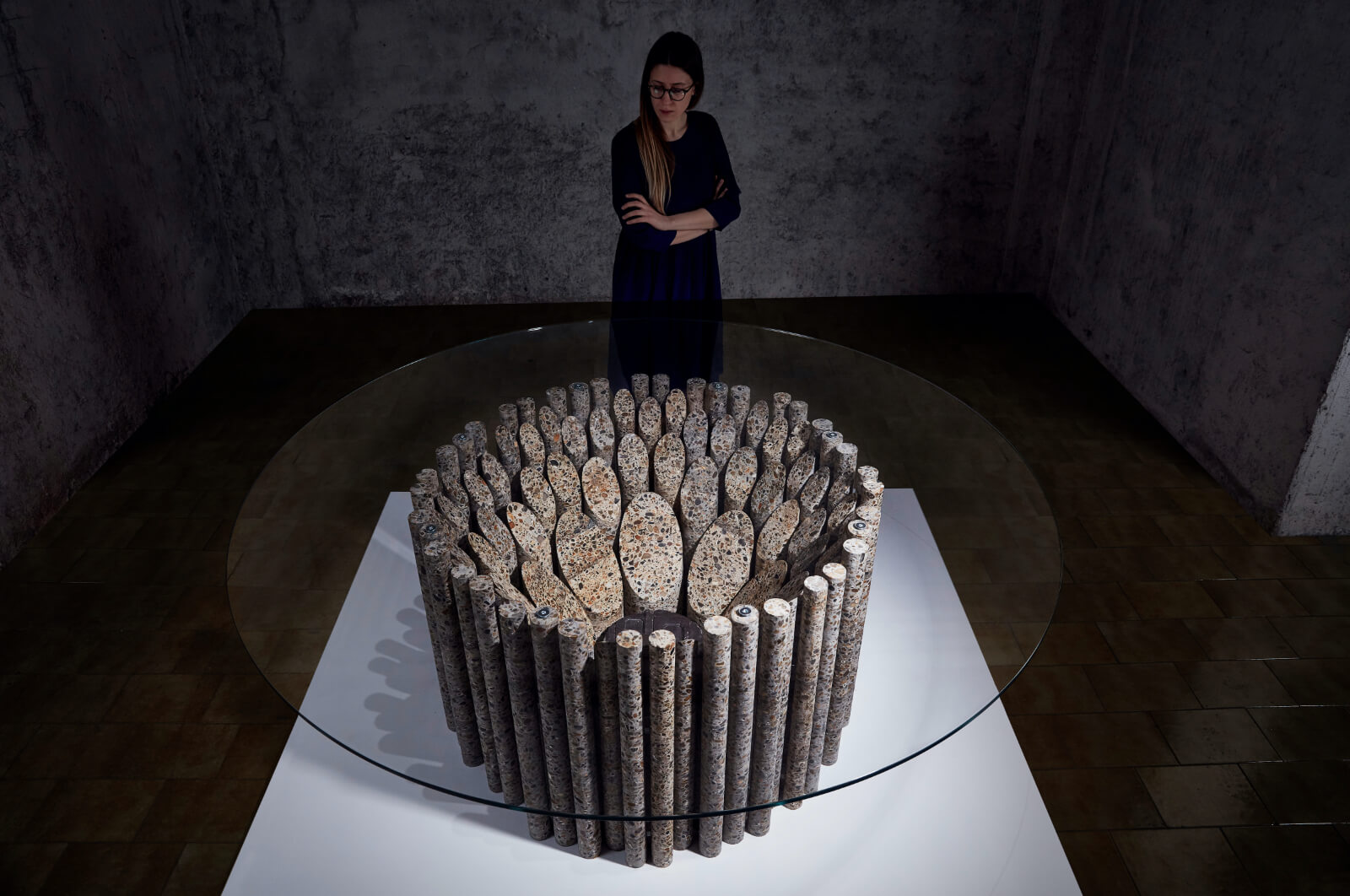
Paul Cocksedge, ‘EXCAVATION: EVICTED’ Sliced Cored Table, 2017
COURTESY: © Paul Cocksedge Studio / PHOTOGRAPH: Mark Cocksedge
A feature that many projects share with ‘Slump’ is the way Cocksedge questions and manipulates materials. Heat has always played a part in a lot of my work, Cocksedge affirms. ‘Slice’ (2015) is one such project “ an elegant series of furniture made by heating blocks of acrylic that, thanks to the force of gravity, sliced into upper and lower parts, culminating in tables and a stool with ‘sliced’ legs.
Questioning and manipulating materials was also the crux of Cocksedge’s ‘Freeze’ (2015) series, exhibited at Friedman Benda in New York, where the designer ingeniously bonded metals. The breakthrough piece was ‘Freeze Rectangle Table’, a copper-and-aluminium table made by burying the four copper legs in the snow where they minutely contracted. Then they were lifted and inserted into holes cut into an aluminium slab where they thawed and locked into place.
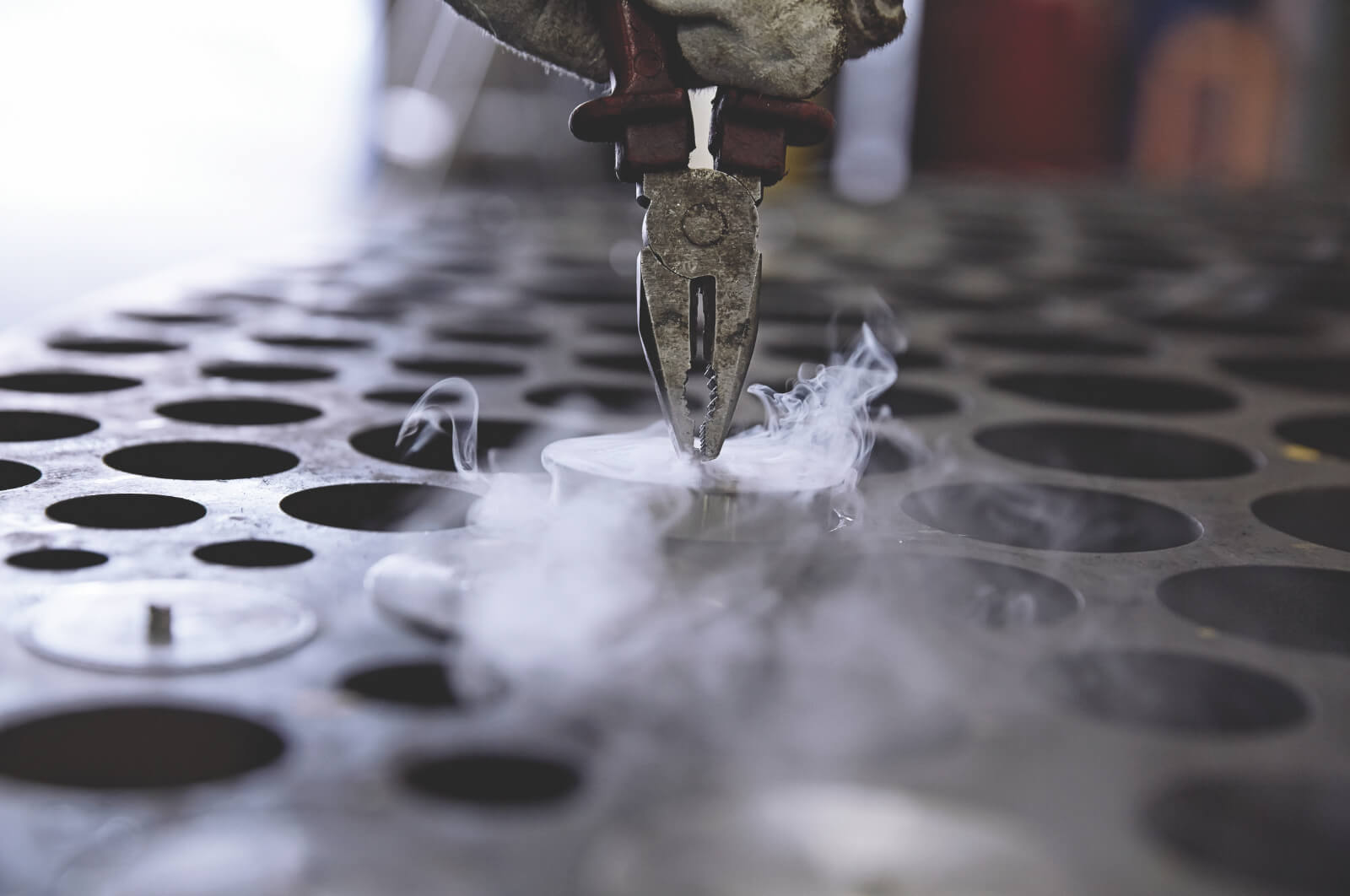
Paul Cocksedge, ‘FREEZE’ Circles Table, 2015
COURTESY: © Paul Cocksedge Studio / PHOTOGRAPH: Mark Cocksedge
As the Shanghai-based curator, Aric Chen, opines: “Paul has this incredible ability to give otherwise brute materials and extreme fabrication processes a wondrous sense of poetry and lightness. Whether balancing rolled metal plates in impossibly delicate ways, drilling furniture from concrete floors or making sheets of Corian flutter, he dives deep into how things are made and then makes them do what they’re not supposed to do.”
How did the collaboration with Carpenters Workshop Gallery arise? I’ve seen Carpenters grow and inspire the design audience for over a decade but we’d never sat down and talked about ideas and collaboration, Cocksedge replies. Then it happened organically after we saw each other at PAD Paris in April 2019. I felt as if I could open up my sketchbook without a worry and slowly, but surely, show some projects.” He adds, “I remember saying [about ‘Slump’], ‘This is going to be quite an ambitious project.’ But they said, ‘Let’s start, let’s experiment and see where it goes.’
After months of lockdown, Cocksedge is excited to be exhibiting again. For creative people, there’s been a hibernation in terms of being able to show our work to the world, he says. I had to go back to basics, drawing and thinking a lot. After us all being glued to our phones swiping, screen-shotting and participating in Zoom meetings and podcasts, seeing three-dimensional pieces will hopefully be inspiring. This collage of different materials [in ‘Slump’] will speak to people in different ways and be a very tactile and enjoyable experience.
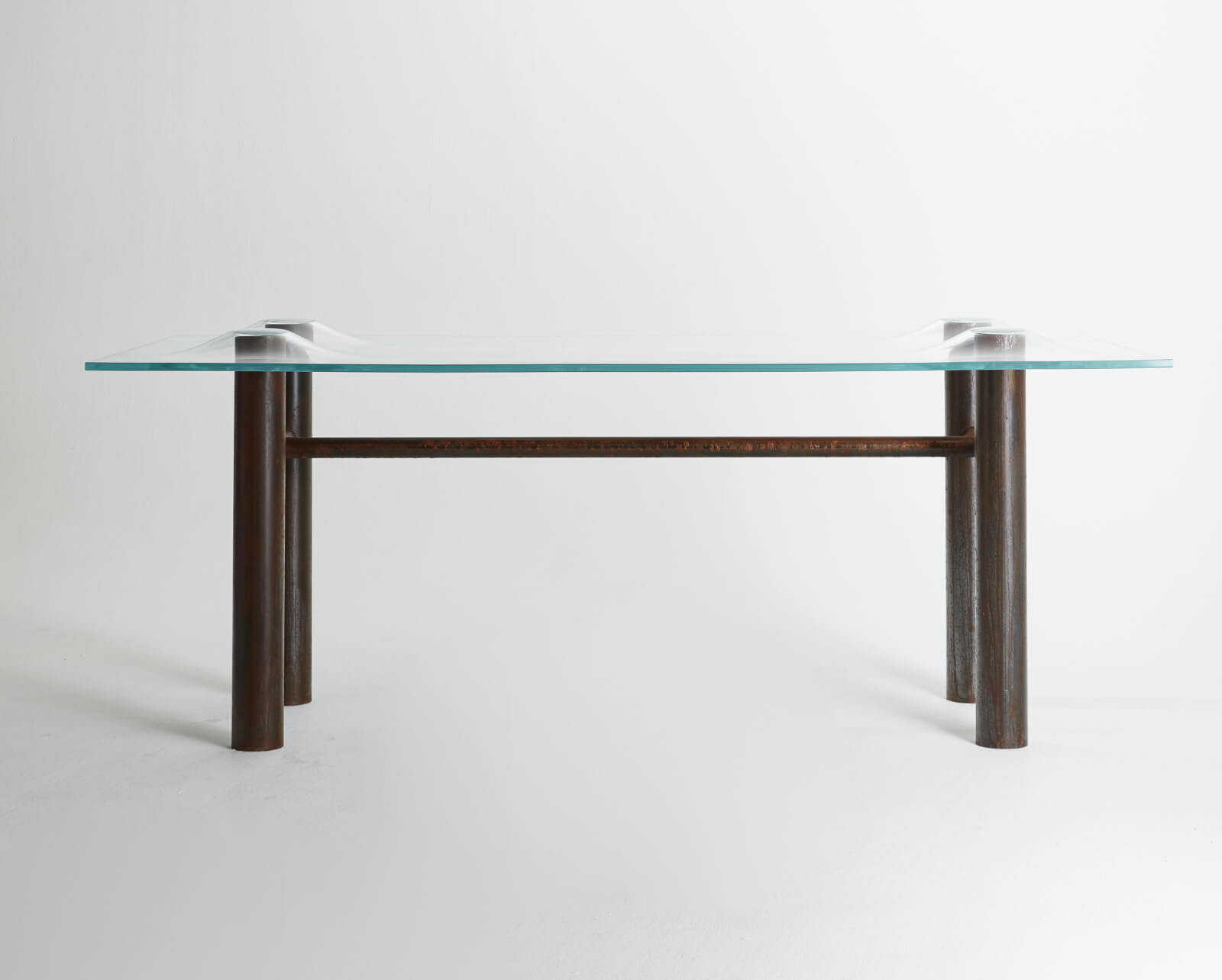
Paul Cocksedge, ‘Slump 4 Legs Dining Table’, 2019
COURTESY: Carpenters Workshop Gallery
Paul Cocksedge explains the concepts behind Slump
COURTESY: Carpenters Workshop Gallery
Carpenters Workshop Gallery – produces and exhibits functional art by international artists or designers, both rising and established, going outside their traditional territories of expression.




